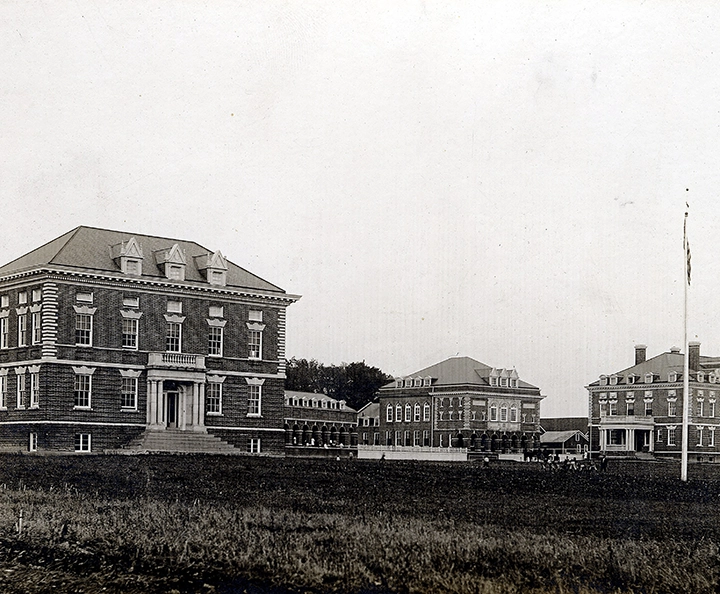Seneca Nation Archives/Onöhsagwë:de Cultural Center, Allegany Territory
Pictured above: Thomas Indian School, Cattaraugus Territory
1855, April 10 – The New York State legislature incorporated the Thomas Asylum for Orphan and Destitute Indian Children “to provide for its establishment and maintenance.” The state appropriated $2,000 for construction and maintenance of a suitable building, allotted $10 for the maintenance of each child, and placed the orphanage under the auspices of the state Department of Instruction. It was named in honor of Quaker philanthropist Philip Thomas, a Baltimore banker and railroad investor. Senecas Sylvester Lay, Wallace King, Zachariah L. Jimeson, Lewis Seneca and Joshua Pierce were named to the first board of trustees.
1875, April 13 – Asher Wright who served as a missionary to the Senecas for 57 years, first at Buffalo Creek and then at Cattaraugus, died on this date at the age of 73. Wright and his wife Laura opened their home to orphan Seneca children thereby establishing what would become known as the Thomas Asylum and later the Thomas Indian School. He translated hymns and the Gospels into the Seneca language, published The Mental Elevator in the Seneca language, served as a physician to the children at the orphanage and to the Cattaraugus community. He and his wife are buried in the Mission cemetery.
1875, April 24 – The Thomas Asylum was transferred to the state and placed under the supervision of the State Board of Charities.
1892, April 16 – An article in The Buffalo Enquirer brought to light the obscene and odious actions of the Thomas Asylum superintendent J.H. Van Valkenburg (tenure 1881-1892). Van Valkenburg had duped an enabling board of managers as well as the State Board of Charities with glowing reports of student life at the Asylum. Citing scores of testimonies heard by the State Board of Charities, the Enquirer reported that the investigative committee had found “substantial evidence [of] improper conduct, of the late superintendent toward female inmates, and to sustain complaints of improper and insufficient food, of undue severity, of cruelty in punishment and disciplining, and in other matters. . .” Van Valkenburg escaped any responsibility and punishment by feigning insanity giving him the opportunity to relocate out-of-state. Likewise, the thousands of pages of documentation pertaining to the investigation have never been located.
1895, April 6 – By NYS legislation George Lincoln was appointed superintendent of the Thomas Orphan Asylum. George Lincoln was the nephew of Charles Z. Lincoln, legal advisor to NYS Governor Roswell Flower. During Lincoln’s tenure the campus, formerly consisting of wooden structures, was replaced with buildings constructed of steel and brick. Lincoln started a kindergarten and commencement exercises, added a music teacher, woodworking courses, an athletic department with a football team, stressed that older students continue at Carlisle Indian Industrial School and Hampton Normal and Agricultural Institute, and lobbied to have the name changed from the Thomas Asylum to the Thomas Indian School. He died in 1907 and was succeeded by his wife Emily.




